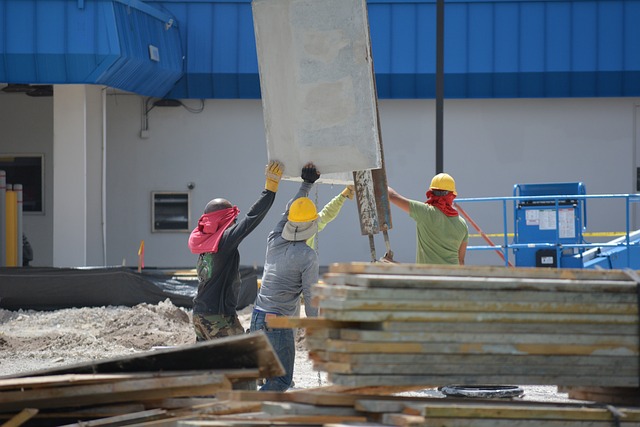In today's digital era, ensuring project safety, especially in managing dense urban subsurface utilities, is paramount. Professional utility potholing services, particularly vacuum (hydro) excavation techniques, offer non-destructive ways to map and expose critical underground lines like water, gas, electricity, and telecommunications cables before excavation. This precision minimizes damage to essential infrastructure, prevents costly disruptions, and enhances project efficiency while promoting eco-friendly practices. Safe potholing services are crucial for secure and efficient construction environments, reducing risks associated with traditional digging methods.
In today’s world, ensuring project safety through meticulous planning and execution is paramount. Among the most critical aspects is managing underground utilities, which often remain unseen yet vital to construction projects. This article explores how utility potholing services play a pivotal role in enhancing project safety. We delve into the benefits of professional vacuum excavation potholing techniques, focusing on maximizing precision in locating and exposing utility lines non-destructively. Additionally, we outline best practices for safe and efficient subsurface utility potholing operations, emphasizing hydro excavation potholing as a game-changer in the industry.
Understanding the Importance of Utility Potholing Services for Project Safety
In today’s digital era, where infrastructure is a cornerstone of modern society, ensuring project safety has become more critical than ever. One often-overlooked yet crucial aspect of construction and development projects is the management of subsurface utilities. Utility potholing services play a pivotal role in maintaining project integrity by facilitating precise utility location and exposure. Professional utility potholing techniques, such as vacuum excavation potholing (also known as hydro excavation potholing), offer a non-destructive approach to uncovering critical infrastructure beneath the surface.
By employing these advanced methods, construction teams can accurately identify and map underground lines, including water, sewer, gas, and electric cables, before commencing any digging or excavation work. This meticulous process minimizes the risk of damage to vital utilities, preventing costly disruptions and potential hazards. Safe potholing services ensure that projects are completed with minimal interference to subsurface networks, ultimately contributing to a more secure and efficient construction environment.
The Benefits of Professional Vacuum Excavation Potholing Techniques
Professional vacuum excavation potholing techniques offer numerous benefits for enhancing project safety and ensuring efficient utility management. This non-destructive method allows for precise utility location, enabling construction teams to accurately identify and expose underground lines such as water, gas, electricity, and telecommunications cables before beginning any excavation work. By employing hydro excavation potholing or utility potholing services, contractors can significantly reduce the risk of damaging critical infrastructure, which is a significant concern in urban environments where utilities are densely packed.
Compared to traditional digging methods, professional utility potholing provides increased safety due to its ability to create controlled excavation sites with minimal disruption to the surrounding area. This precision allows for safer access to underground utilities, reducing the likelihood of service disruptions and potential hazards associated with accidental line damage. Moreover, vacuum excavation potholing techniques produce no physical waste, making them an environmentally friendly choice for projects focused on sustainability.
Maximizing Precision: Locating and Exposing Utility Lines Non-Destructively
Maximizing Precision: Locating and Exposing Utility Lines Non-Destructively
In today’s digital era, ensuring safe and efficient project execution requires meticulous attention to subsurface infrastructure. Utility potholing services, such as vacuum excavation potholing and hydro excavation potholing, offer a non-destructive approach to precise utility line exposure. These professional utility potholing techniques utilize advanced equipment to locate and map critical utilities beneath the surface without causing damage. By employing these safe potholing services, construction projects can be completed with minimal disruption, reducing the risk of service interruptions and costly repairs.
Vacuum excavation and hydro excavation potholing provide a detailed view of the subsurface landscape, allowing for accurate identification and documentation of utility lines. This level of precision is crucial in avoiding accidental damage to vital infrastructure during excavation. With these non-destructive methods, professionals can expose utility lines, confirm their locations, and even inspect them for any signs of damage or corrosion, fostering a safer and more comprehensive project planning process.
Best Practices for Safe and Efficient Subsurface Utility Potholing Operations
When conducting utility potholing services, adhering to best practices ensures safe and efficient operations. Professional utility potholing involves using advanced techniques like vacuum excavation potholing, also known as hydro excavation potholing, which offers a non-destructive approach to exposing buried utility lines. This method is crucial for precise utility location, minimizing damage to underground infrastructure during construction or maintenance projects.
Best practices emphasize the importance of thorough planning, including accurate mapping and marking of existing utility lines. Safety protocols, such as training personnel in safe potholing procedures and ensuring proper use of protective gear, are essential. Additionally, utilizing specialized equipment for utility line exposure and implementing effective communication between operators and nearby workers contribute to a safer working environment. These practices ultimately enhance the efficiency of subsurface utility potholing, reducing costs and project timelines while prioritizing safety.
In conclusion, integrating detailed utility verification through advanced vacuum excavation and potholing techniques significantly enhances project safety. By adopting professional utility potholing services, construction teams can ensure precise utility line exposure, enabling non-destructive access to critical subsurface infrastructure. Best practices in safe and efficient subsurface utility potholing operations, including thorough planning, specialized equipment, and comprehensive training, are essential for minimizing risks and ensuring successful project completion without damaging vital utilities.
